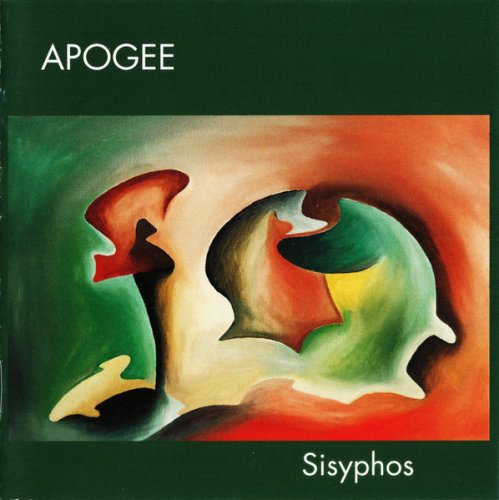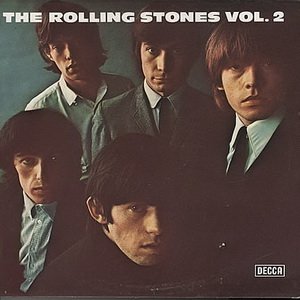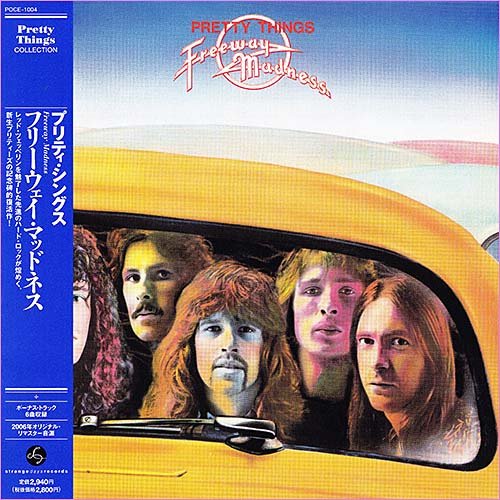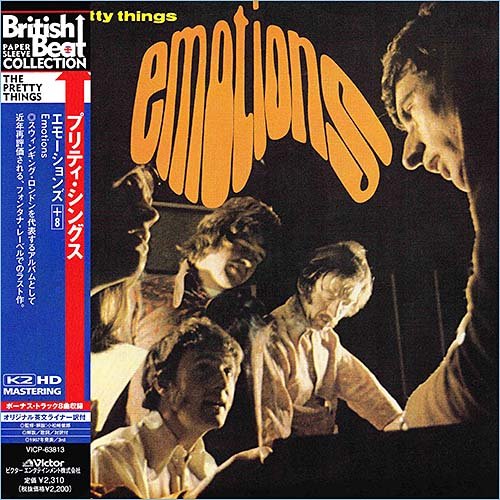Wilson Pickett - Funky Midnight Mover - The Atlantic Studio Recordings 1962-1978 (2010) 6CD

Wilson Pickett - Funky Midnight Mover - The Atlantic Studio Recordings 1962-1978 (2010) 6CD
Artist: Wilson Pickett Title Of Album: Funky Midnight Mover Year Of Release: 2010 Label (Catalog#) :Rhino Handmade RHM2 07753 Country:: USA Genre: Funk, Soul, R&B Quality: FLAC (tracks+cue,log) Bitrate: Lossless Time: 07:43:54 Full Size: 3.65Gb(+3%)(covers+book/92page) Info: wiki
14 10, 2025
Apogee - Sisyphos (1998)(2006)

Apogee - Sisyphos (1998)(2006)
Artist: Apogee Title Of Album: Sisyphos Year Of Release: 1998/2006 Label (Catalog#) : Musea / MALS MALS 105 Country:: Germany Genre: Prog Rock, Crossover Prog Quality: WavPac (*image + .cue,log) Bitrate: Lossless Time: 63:52 Full Size: 534Mb(+3%)(covers) Info: progarchives Upload: xfile.cloud
14 10, 2025
Steve Hillage + Arzachel + Khan: 10 Albums
По многочисленным просьбам / Reupload New Links Thank your sheloshim and original ripper / uploader Steve Hillage + Arzachel + Khan: 10 Albums Performer: Steve Hillage + Arzachel (with Steve Hillage) / Khan (with Steve Hillage) Albums: -------------- ☆☆☆☆☆☆☆☆☆☆☆ -------------- Arzachel: 1969 Arzachel Akarma Records AK 184 Italy 2002 -------------- ☆☆☆☆☆☆☆☆☆☆☆ -------------- Khan: 1972 Space Shanty Rock Legend Series / Reissue 2008 Universal Music Japan Mini LP SHM-CD UICY-93833 --------------

Steve Hillage + Arzachel + Khan: 10 Albums
По многочисленным просьбам / Reupload New Links Thank your sheloshim and original ripper / uploader Steve Hillage + Arzachel + Khan: 10 Albums Performer: Steve Hillage + Arzachel (with Steve Hillage) / Khan (with Steve Hillage) Albums: -------------- ☆☆☆☆☆☆☆☆☆☆☆ -------------- Arzachel: 1969 Arzachel Akarma Records AK 184 Italy 2002 -------------- ☆☆☆☆☆☆☆☆☆☆☆ -------------- Khan: 1972 Space Shanty Rock Legend Series / Reissue 2008 Universal Music Japan Mini LP SHM-CD UICY-93833 --------------
14 10, 2025
Жанры
Lossless Galaxy Release
Русская музыка
--Поп
--Рок
--Панк
--Альтернатива
--Металл
--Рэп, Хип-Хоп, R'n'B
--Джаз и Блюз
--Фолк
--Шансон, Авторская песня
--СССР
Зарубежная музыка
--Pop
--Rock
--Hard Rock
--Progressive & Art-Rock
--Pop-Rock & Soft Rock
--Instrumental Rock
--Heavy, Traditional, Industrial Metal
--Power, Gothic, Sympho Metal
--Thrash, Speed, Groove, Modern Metal
--Death, Melodic Death, Doom, Dark Metal
--Black, Pagan, Folk, Viking Metal
--Alternative
--Punk
--Disco, Eurodance
--Rap, Hip Hop, R'n'B
--Reggae, Ska, Dub
--Jazz, Blues, Soul
--Folk, Country, Ethnic
--Electronic, Ambient, New Wave
--House, Techno, Trance
Другие жанры
--New Age, Relax, Meditative & Flamenco
--Chillout, Lounge, Downtempo, Trip-Hop
--Drum & Bass, Jungle, Breakbeat, IDM
--Classical / Классическая музыка
--Soundtrack
--Музыкальные сказки
Vinyl Rip
HI-Res / DVD-Audio / DTS
--SACD
--DSD
--DVD-Audio
Сборники Lossless-Galaxy
Альбомы 2022
Альбомы 2023
Альбомы 2024
Теги
1st Press 2022 2023 2024 2025 70... AOR Black Metal Blues Blues Rock Bootleg Series Classic Rock Death Metal Discography Exclusive for Lossless-Galaxy Folk Rock Fusion Hard Rock Heavy Metal Hi-Res Japanese Edition Jazz Jazz Rock lossless Melodic Death Metal Melodic Rock Modern Electric Blues Pop Pop Rock Power Metal Prog Rock Progressive Metal Progressive Rock Psych Rock Psychedelic Rock Rock SACD Symphonic Metal Thrash Metal Дискографии от KoGGaN
Архивы
Опрос
В каком формате хотели бы видеть релизы на сайте ?
 Автор: LeddZepp, 2 апреля 2022, Комментариев: 0, Просмотров: 454
Автор: LeddZepp, 2 апреля 2022, Комментариев: 0, Просмотров: 454The Pretty Things - Get The Picture [Japan Edition] (1965)
![The Pretty Things - Get The Picture [Japan Edition] (1965) The Pretty Things - Get The Picture [Japan Edition] (1965)](/uploads/posts/2022-04/1648901204_prettythings65get_500.jpg)
Year: December 1965 (CD Jun 27, 2007)
Label: Victor Records (Japan), VICP-63812
Style: Garage Rock, R&B
Country: London, England
Time: 46:05
Format: Flac Tracks 16/44,1 kHz
Size: 156 Mb
The Pretty Things — британская рок-группа, основанная в Лондоне в 1963 году. Название группы происходит от одноименной ("Pretty Thing") песни Бо Диддли 1955 года. В ранний период существования британская пресса нарекла группу титулом "уродливый кузен The Rolling Stones" (англ. uglier cousins of the Rolling Stones). The Pretty Things стала одной из групп Британского вторжения, при этом исполняла гаражный ритм-энд-блюз, созвучный с The Rolling Stones, но намного более жёсткий; затем английскую психоделию, классический и тяжёлый рок, и музыку близкую к панк-року и новой волне.
Дик Тейлор (Dick Taylor, род. 28 января 1943), студент Sidcup Art College, начал свою музыкальную карьеру в Little Boy Blue и Blue Boys, где вместе с ним выступали Кит Ричардс и Мик Джаггер. Когда Брайан Джонс присоединился к группе в качестве гитариста, Тейлор перешёл с гитары на бас, и группа стала называться The Rolling Stones. Несколько месяцев спустя Тейлор покинул Stones и поступил в Лондонскую центральную школу искусств, где познакомился с Филом Мэем (Phil May, 9 ноября 1944 — 9 мая 2020). Вместе они и сформировали The Pretty Things: Тейлор снова взял в руки гитару, а Мэй стал вокалистом-фронтменом, играющим также на гармонике и перкуссионных инструментах.
(wikipedia.org/wiki/The_Pretty_Things)
Британец Дик Тейлор начинал свою профессиональную музыкальную карьеру вместе с Миком Джаггером и Китом Ричардсом, играя в таких коллективах как Little Boy Blue и Blue Boy. Когда их пути разошлись, Тейлор поступил в Лондонскую школу искусств, где познакомился с Филом Мэем. Этот творческий дуэт и сформировал новую группу The Pretty Things, которую пресса окрестила "уродливым братцем The Rolling Stones". Вскоре к ним присоединились Брайан Пендлтон, Джон Стакс и Вив Принс. В 1964 году молодая группа получает контракт со звукозаписывающей компанией. В том же году коллектив выпускает дебютный EP The Pretty Things, который мгновенно наводит шороху в музыкальной среде Британии. Пластинка являла собой смесь гаражного рока с ритм-н-блюзом и благодаря ряду хитов взобралась на 6 строчку в чартах. В начале следующего года вышел не менее успешный одноименный полноформатный дебютный альбом. Группа отправилась в международный тур, в котором отличилась особо буйным поведением на сцене. Британцы настолько шокировали общественность, что в Новой Зеландии им угрожали пожизненным запретом на въезд в страну. Особым буйством отличался Принс, которому выходки стоили места в составе группы. Ударник вылетел из группы еще до окончания работы над второй пластинкой Get the Picture?, которая вышла в конце 1965 года. Работа имела успех у критиков, но значительно проигрывала дебютной пластинке в коммерческом плане. В начале 1966 года группа сняла короткометражный фильм "The Pretty Things on Film", который можно рассматривать как важный шаг в клипмейкерстве.
Но в кадровом плане группу продолжало трясти: коллектив покинул Стакс. Обновив состав, группа на своем третьем альбоме Emotions (1967 год) пустилась в творческие эксперименты. Звучание обогатили оркестровые аранжировки, а сама пластинка ознаменовала разворот к психоделическому року. Следующие творческие изыскания привели участников группы к созданию первой рок-оперы. Концептуальная работа S.F. Sorrow вышла в 1968 году и была высоко оценена критиками, но к тому моменту британцы утратили свою былую популярность, и пластинка прошла мимо массовой аудитории. Провал пластинки стал большим разочарованием для Тейлора, который вскоре покинул группу. К началу 70-х Мэй остался единственным оригинальным участником коллектива. Британцы немного восстановили свою популярность, когда выпустили пластинку Parachute в 1970-м году. Звучание коллектива немного утяжелилось, что вызвало интерес у слушателей: пластинка вернула коллектив в ТОП-50 Британии.
Но это не спасло группу от распада, который произошел в том же году. Правда уже в 1971 году группа была реанимирована в новом составе. Мэй продолжил утяжелять звучание, что отразилось на следующей пластинке Freeway Madness, которая вышла 1972 году. Работа не удостоилась особого внимания прессы и слушателей. Но британцы не опустили рук и в 1970-е годы выпустили еще две пластинки: Silk Torpedo в 1974 году и Savage Eye в 1976 году. Обе работы пролетели мимо чартов на родине, а в Штатах пользовались очень скромным успехом. В 1976 году коллектив вновь распадается. На этот раз перерыв в творчестве был более долгим, и возрождение группы состоялось уже ближе к новому десятилетию. Творческий Мэй - Тейлор был восстановлен. Поддавшись модному влиянию нью вейва, группа выпустила пластинку Cross Talk в 1980-м году. Но популярность вновь ускользнула от британцев. Последующая деятельность коллектива свелась к скромным клубным турам и еще трем студийным работам (... Rage Before Beauty, Balboa Island и The Sweet Pretty Things (Are in Bed Now, of Course...). В 2018 году группа отыграла прощальный тур, а спустя два года скончался Мэй. Но и это не поставило окончательную точку в истории группы: был анонсирован выход неизданного материала на вторую половину 2020-го года.
(zen.yandex.ru/media/bang_your_head/the-pretty-things-istoriia-gruppy-5f0f062c34a56c6326a8ee80)
01. You Don't Believe Me (02:23)
02. Buzz The Jerk (01:54)
03. Get The Picture? (01:55)
04. Can't Stand The Pain (02:41)
05. Rainin' In My Heart (02:30)
06. We'll Play House (02:32)
07. You'll Never Do It Baby (02:26)
08. I Had A Dream (02:58)
09. I Want Your Love (02:16)
10. London Town (02:26)
11. Cry To Me (02:51)
12. Gonna Find Me A Substitute (02:57)
13. Get A Buzz (04:01)
14. Sittin' All Alone (02:47)
15. Midnight To Six Man (02:19)
16. Me Needing You (01:57)
17. Come See Me (02:39)
18. L.S.D. (02:25)
![The Pretty Things - Get The Picture [Japan Edition] (1965) The Pretty Things - Get The Picture [Japan Edition] (1965)](https://i.ibb.co/84qHMdq/Pretty-Things65-Get-01.jpg)
![The Pretty Things - Get The Picture [Japan Edition] (1965) The Pretty Things - Get The Picture [Japan Edition] (1965)](https://i.ibb.co/hyDDtvP/Pretty-Things65-Get-front-OBI.jpg)
![The Pretty Things - Get The Picture [Japan Edition] (1965) The Pretty Things - Get The Picture [Japan Edition] (1965)](https://i.ibb.co/QN5V9X6/Pretty-Things65-Get-OBI.jpg)
При желании можно посмотреть все мои публикации на сайте. Приятного прослушивания. Жмём и смотрим (Click to see all of my posts)!
Внимание! У Вас нет прав для просмотра скрытого текста.
Похожие новости:
Комментарии отсутствуют
Добавить комментарий!
Информация
Посетители, находящиеся в группе Гости, не могут оставлять комментарии к данной публикации.

![The Pretty Things - Parachute [Japan Edition] (1970)](/uploads/posts/2022-01/1643302345_prettythings70parachute_500.jpg)



